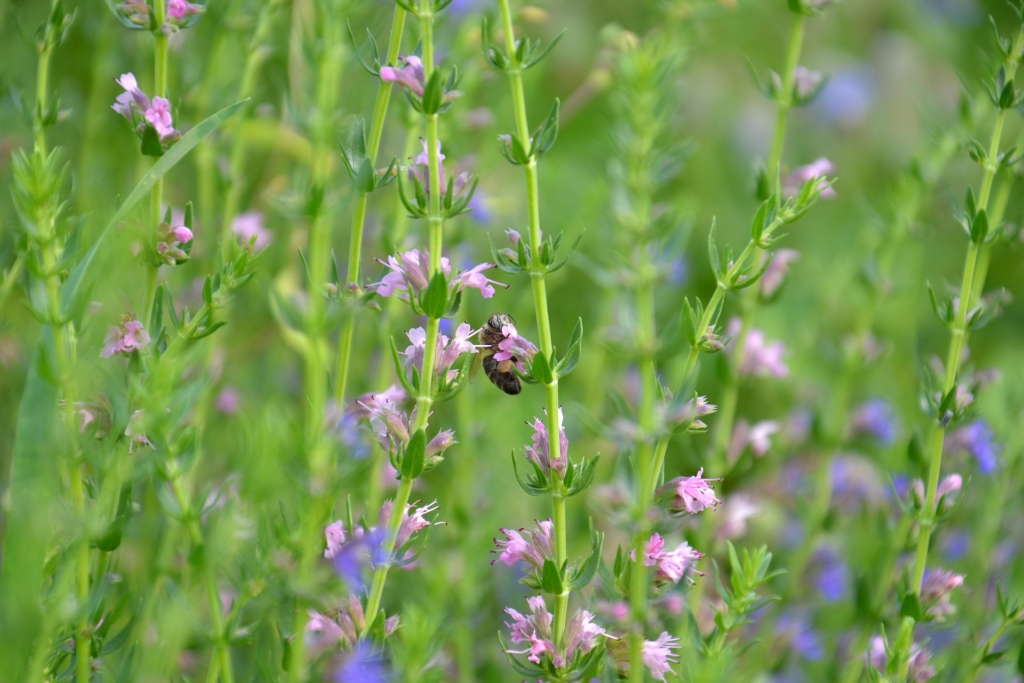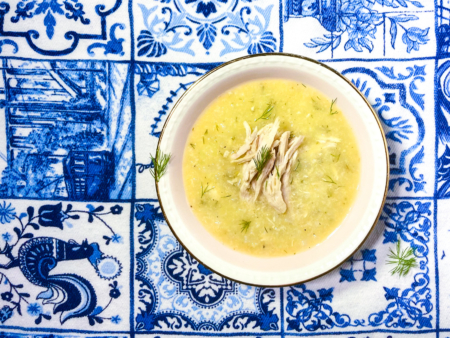An aromatic herb from the Mediterranean region with a fresh and bright flavor, hyssop has long been used both in foods and folk remedies. Read more about its history and uses below.
What is Hyssop?
Hyssop is a small perennial plant used as food and medicine since classical antiquity, including in ancient Egypt, Israel, and Greece. It produces an essential oil with apothic, culinary, and perfumery uses, and its flowers and young leaves can be used fresh in dishes or dried. In some cases, hyssop is grown for its aromatic leaves and blue-purple, pink, red, or white flowers, which attract bees and lead to prized honey. Its place in folk medicine has revolved around its highly aromatic leaves, traditionally steeped into a strong tea to relieve respiratory symptoms, to aid in digestion of rich or fatty foods, and sometimes even applied externally to heal bruises.
Hyssop History

Though the term for hyssop (“ezov,” from a Hebrew word meaning “holy herb”) appears numerous times in the Bible, the references aren’t to the same plant. Noting that modern hyssop wasn’t local to Palestine at the time, the Encyclopedia Britannica guesses that the Biblical hyssop may have actually been a species of caper or savory.
Ancient Romans believed in the protective power of hyssop, hanging dried bouquets in their homes to ward against plague, negative intention, and the evil eye. Later, during the Middle Ages, hyssop was a popular flavoring used frequently as a potherb. In modern times, hyssop’s main use is in liqueurs and isn’t otherwise common to find.
What does Hyssop taste like?
As part of the mint family, highly-aromatic hyssop has a flavor akin to mint, with added floral and bitter notes. It’s been described as a minty lavender with a warm bitterness.
How to cook with Hyssop

Both the flowers and leaves are edible, and while the flowers are often used as garnishes, the leaves can flavor meats, fish, vegetables, salads, sweets, and liqueurs, even substituting for mint or sage. Hyssop is used in some Greek and Israeli cooking, and it complements flavors common to those cuisines (you could try adding it in our Greek Salmon with Orzo Salad or our riff on Yotam Ottolenghi’s Turkey Meatballs). Its flavor is also well-suited to desserts and sweets, like fruit syrups and jam, ice cream, or this Hyssop and Rose Sponge Layer Cake.
Fresh hyssop leaves can be steamed to lessen their intensity and bitterness. They can nicely flavor roasted and braised meats, fish, vegetables, salads, and soups. They also work well as part of a soft cheese platter, perhaps with goat cheese and fresh figs.
Using dried hyssop leaves can take planning due to their texture, like delicate little needles. They grind well into a powder, but steeping or infusion may be easier. Rehydrated leaves have the texture of tea leaves and give good flavor when packed into a tea ball or spice bag and plunked into the pot for a short time. Dried hyssop can be added to roasted vegetables, soups and stews, or to make tea.
Where to find Hyssop
Though you might see fresh hyssop at a farmers’ market, it’s most commonly sold dried. It might be found at Middle Eastern, Mediterranean, or Indian markets. It can also be found at online retailers.
Feature Image: Sten (CC BY-SA 3.0)




Thank you for the information